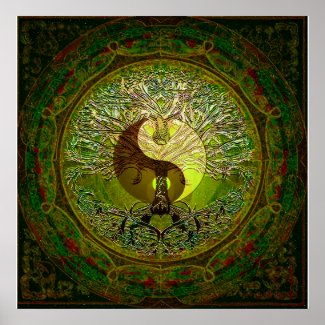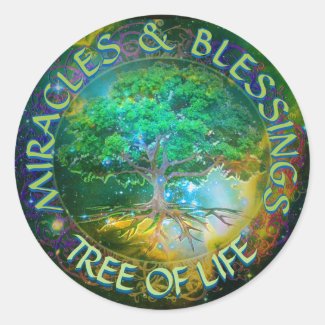The Tree of Life and the Circle of Life
The Tree of Life and the Circle of Life===
The Tree of Life and the Circle of Life are two powerful symbols that have been used for centuries to represent the interconnectedness of all living beings. Both symbols represent the cycle of birth, life, death, and rebirth, and the idea that all living things are connected in this cycle. The Tree of Life is a universal symbol found in many cultures, while the Circle of Life is a concept that has its roots in Native American traditions, but has since been adopted by many different cultures around the world. In this article, we will explore the meanings and significance of these powerful symbols, and how they can inspire us to live a more connected and meaningful life.
The Tree of Life: A Universal Symbol of Connection
The Tree of Life is a symbol that has been used in many cultures throughout history. It is often depicted as a tree with roots that reach down into the earth, and branches that reach up into the sky. The tree is a symbol of growth, strength, and connection, and it represents the idea that all living things are connected to each other and to the universe. In many cultures, the Tree of Life is seen as a symbol of fertility, abundance, and prosperity.
The Circle of Life: Understanding Its Meaning and Significance
The Circle of Life is a concept that has its roots in Native American traditions, but has since been adopted by many different cultures around the world. The Circle of Life represents the cycle of birth, life, death, and rebirth, and the idea that all living things are connected in this cycle. The circle is a symbol of wholeness, unity, and interconnectedness, and it reminds us that we are all part of something greater than ourselves.
The Interconnectedness of All Living Beings
The Tree of Life and the Circle of Life are both symbols that remind us of the interconnectedness of all living beings. Everything in the universe is connected, from the smallest particle to the largest galaxy. We are all part of a larger whole, and our actions have an impact on the world around us. When we remember this, we are more likely to act in a way that is in harmony with the world, rather than against it.
The Tree of Life and Its Symbolism in Different Cultures
The Tree of Life has different meanings and symbolism in different cultures. In Celtic culture, the Tree of Life represents the connection between the physical world and the spiritual world. In Hinduism, the tree represents the universe, with its roots in the underworld, its trunk in the physical world, and its branches in the heavens. In Norse mythology, the tree is known as Yggdrasil, and it is said to connect the nine worlds of the universe.
The Circle of Life: Embracing Change and Growth
The Circle of Life reminds us that change is a natural part of life, and that we should embrace it rather than resist it. Life is a journey, and we are constantly growing and evolving. When we resist change, we become stuck in old patterns and habits, and we miss out on the opportunities for growth and transformation that are available to us.
Finding Inspiration and Wisdom from the Tree of Life and the Circle of Life
Both the Tree of Life and the Circle of Life are symbols that can inspire us to live a more connected and meaningful life. They remind us that we are all part of something greater than ourselves, and that our actions have an impact on the world around us. They also remind us to embrace change and growth, and to live our lives with purpose and intention. When we embrace these symbols and the wisdom they offer, we can live a more fulfilling and satisfying life.
===
In conclusion, the Tree of Life and the Circle of Life are powerful symbols that remind us of the interconnectedness of all living beings. They offer us inspiration and wisdom to live a more connected and meaningful life, and to embrace change and growth as a natural part of the journey. By embracing these symbols and the wisdom they offer, we can live a life that is in harmony with the world around us, and that brings us joy and fulfillment.


